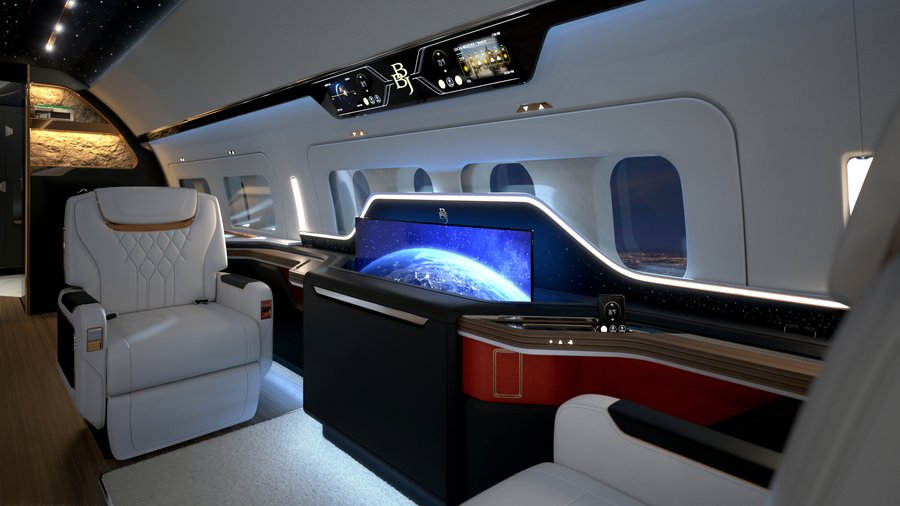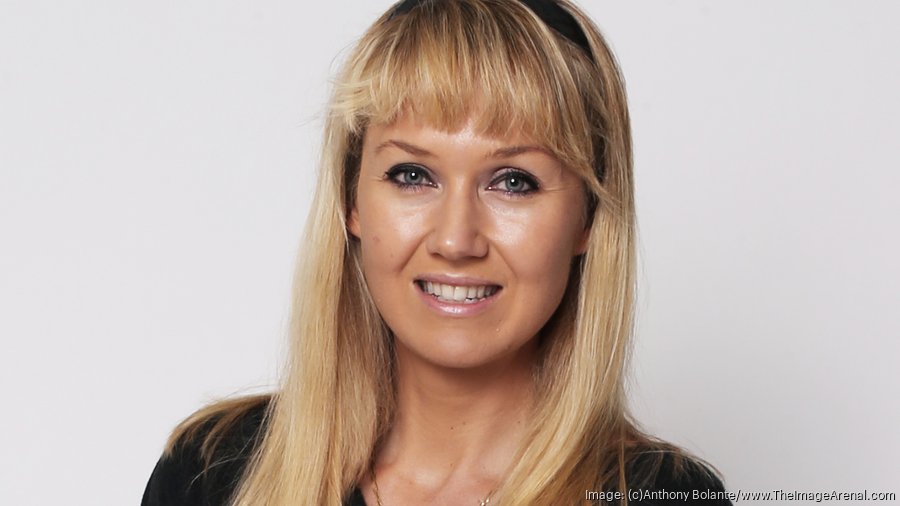Private jet centers are in development throughout the Puget Sound region, where operators are vying for a piece of the executive travel market.
Commercial airlines report business travel recovery is still sluggish, thanks chiefly to large corporate customers that have sought to keep costs and carbon footprints low. But there’s another culprit — the allure of the private jet.
During the pandemic, private and executive charter flights surged, and while predictions that travelers would turn to private flights en masse haven’t been borne out, the segment has managed to retain some of the market share it grabbed during its 2021 peak.
“What we’re seeing is it leveling off to something that is more sustainable,” says Molly Schlobohm, who spoke to the Business Journal shortly before stepping down as president and chief operating officer of Erin Air.
Data from Cirium and the Federal Aviation Administration show that business jet flights had declined around 9% year over year in May but remained around 9% to 11% above their pre-pandemic rate. Deliveries of new jets and existing aircraft sales are increasingly trending toward “fractional” jet owners and charter companies, which tend to fly their aircraft much harder than private owners – increasing the segment’s demand for flight crews, ground services and maintenance.
“We call these things time machines,” Schlobohm says. “They really do provide busy executives with just a huge advantage of being able to get in closer to their meetings” and avoid airport lines.







A look at the business jets being built and flown in the Puget Sound region.
‘People wanted to buy premium’
Premium offerings are driving the growth for airlines, a trend that began even before the pandemic and has only accelerated since, says Savanthi Syth, airlines analyst for Raymond James.
Premium fares have made up 31% of passenger revenue at Seattle’s top carrier, Alaska Airlines (NYSE: ALK), and an even larger chunk of revenue for its No. 2 airline Delta Air Lines (NYSE: DAL). That’s around 5 to 7 percentage points higher than 2019.
Airlines are responding by adding first-class and premium seats at a faster pace than their economy cabins, Syth says.
“There was this drive for premium,” she says. “People wanted to buy premium.”
Much of that is due to how easy it has become to upgrade a flight and tailor it to a traveler’s preferences. Airlines have rolled out app features that have put incremental purchases such as better seats, meal and entertainment choices at their point of sale and every step of the travel experience.
The upheaval within supply chains has also motivated some business travelers to get back on the road and meet in person.
“The moment people change the business you’re working with, you’re going to want to meet them and establish the relationship,” Syth says. During the pandemic, “CFOs who saw lower costs were happy to take advantage of it, but after a while, they realized those trips were happening for a reason.”
That’s helped premium hold steady despite swings in economy class, she adds, as price-sensitive travelers are quicker to pull back spending when they can. That includes small and medium businesses that have reverted back to the major network airlines as charter prices have climbed.
“At a certain point, there are going to be businesses that just can’t afford it and they’re going to have to take the economical approach to switch to commercial aviation,” Schlobohm says.
While private jets offer an enhanced experience with greater space, comfort and amenities, owners and charter customers want speed and reliability, Schlobohm says.
That’s particularly in the wake of heavy cancellations and delays this year by large carriers like United Airlines and Southwest caused by IT challenges and staffing shortages.
“For many of our customers, especially heads of state and VIPs, private air travel is the best option for security and privacy reasons, allowing them to have greater flexibility and independence when traveling,” Joe Benson, Boeing Business Jets division president, told the Business Journal in a recent email interview.

That means Boeing’s business jets division, while just a fraction of the manufacturing giant’s sales, has a higher rate of use per plane — as well as more on-time departures — than its typical products, Benson says.
But the jets’ interiors are where those jets really depart from the rest of Boeing’s portfolio, allowing for built-in air stairs, private rooms, walk-by aisles and other amenities for security, passengers and staff.
What you’ll find inside a private jet varies almost as much as the jet owners themselves. That ranges from curated, locally sourced Pacific Northwest food and beverage options to spacious meeting or sleeping areas, full-size washrooms and the latest in entertainment technology.
Aside from the bells and whistles, though, passengers are seeking a higher level of service and discretion from their pilots and crews, Schlobohm says.






Greenpoint Technologies installs private sleeping suites on the upper deck of Boeing 747s for VIP owners.
‘There’s not a lot of room’
That experience extends well beyond the plane itself, to the lounges and hangars, where companies have poured hundreds of millions of dollars into new infrastructure in the Puget Sound region in recent years. Those new developments include multimillion-dollar new private jet centers like the one Toronto-based Skyservice is building at King County International Airport – Boeing Field, the third such project by a fixed-base operator (FBO) at the airport since 2017.
At Snohomish County’s Seattle Paine Field International Airport, new hangars are also taking shape, including the construction of a new terminal and hangar complex by Propeller Airports, following its acquisition of Castle & Cooke’s FBO business at the airport in 2021.
On the southwest end of the airport, Fortive Corp. is constructing another hangar capable of supporting a Bombardier Global Express large-cabin business jet.
Airlines have also made significant investments in upscale new and renovated lounge spaces at Seattle-Tacoma International Airport, including Alaska’s most popular lounge in the D Concourse and its new 20,000-square-foot lounge space within the C Concourse expansion. Delta is also adding space in the D Concourse, and American Express tripled its footprint at the airport’s central terminal earlier this year.
But limited inventories of private jets and hangar space kept some new customers out of the market even during the peak of demand in 2021 and early 2022, says Katrin Gist who leads CBRE’s national airport real estate practice.
The market has evened out since then, but space remains constrained, particularly around Paine Field, which has become as popular as Boeing Field in the past two years, Gist says. Costs to build new hangars have also risen, which has been reflected in lease rates.
“A lot of people would like to be based there, and there’s not a lot of room,” Gist says.

That’s driven up interest in often overlooked airports such as Arlington Municipal Airport, Renton Municipal Airport and Skagit Regional Airport.
“As hangar space decreases and demand continues to be high, aircraft owners and operators will need to look at alternatives,” she said. “Over the years, I’ve seen potential buyers in the Northwest look at something and not be sure, then have regrets later.”
‘We’re so remote’
Private jet companies have contended with many of the same challenges as commercial airlines, particularly a shortage of pilots and air traffic controllers to help them manage the higher demand.
While the required flight hours and training are less stringent for the private jet market than commercial airliners, many had to get recertified during the pandemic, leaving “great, qualified pilots to wait for openings in flight schools” and training facilities, Schlobohm says.
“If you have any kind of seasoned pilots, you saw some really big pay increases on the mainline side of the business that siphoned away corporate pilots,” she says.
Supply chain disruptions have also kept aircraft on the ground waiting for parts. That’s led charter companies to do inspections and preventive maintenance much further in advance than usual to anticipate what they’ll need.
Things like avionics equipment, tires and windshields that used to be readily available, “strange things that were never an issue three or four years ago have become an issue now,” she said.
Meanwhile, the general aviation market has found itself in the crosshairs of environmental advocates, who have criticized the segment for its higher per-passenger emissions.
Amid operational disruptions that could leave travelers stranded, shorter trips have been the first to go, becoming harder for corporate travel managers to justify.
Europe has banned flights where public transportation is a reasonable alternative, but there are fewer options in the U.S. for that level of “green substitution,” Syth says.
Airlines tend to be aligned with their customers on sustainability efforts, primarily through alternative jet fuel procurements and substituting lightweight materials, to reduce weight and burn less jet fuel. But that can often make it difficult to phase out things like plastics, where there aren’t good alternatives.
Despite the demand, private jet networks have had a hard time penetrating the Seattle market, Schlobohm says.

“We’re so remote, in a sense,” Schlobohm says. “Most of private aviation, a lot of the aircraft, a lot of the flight demand is east of the Mississippi.”
There’s still significant demand for flights from the Pacific Northwest into Montana, Alaska, British Columbia, Mexico and Hawaii.
“The demand here is still very healthy,” she says, both outbound and inbound for business, leisure and blended business-and-leisure trips.
With the return of several high-profile corporate events like Microsoft’s CEO Summit, the Asia-Pacific Economic Conference and the Major League Baseball All-Star Game, this year could wind up being another upswing in Washington’s private aviation market, says John Parrott, airport director at Boeing Field. But that could give way to a lull in the coming months, as the spikes in air traffic die down.
“Those individual events bring more airplanes in,” Parrott says, “but is that really changing the baseline?”